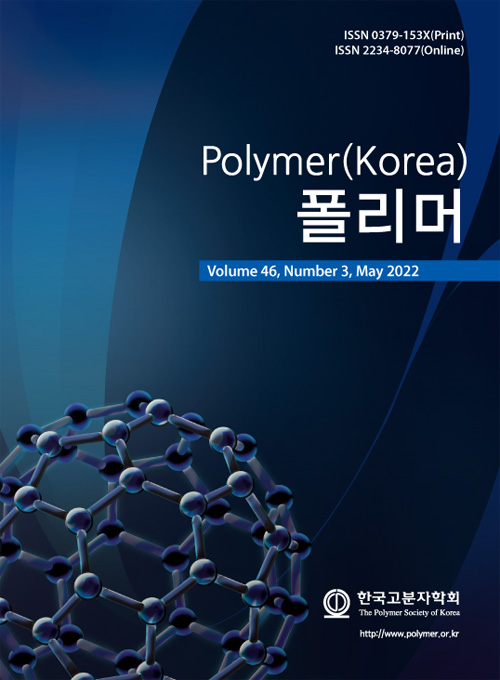- Systematic Study on the Electrical properties of Polymer Composites with Various Types of Conductive Fillers
Interior System Plastic Materials Development Team, 150 Hyundaiyeonguso-ro, Gyeonggi-do 18280, Korea
*Samyang Corp. 730, Daedeok-daero, Daejeon 34055, Korea
**Smart Materials R&D Center, 303 Pungse-ro, Chung Nam 31214, Korea- 전도성 필러의 구조에 따른 고분자 복합체의 전기적 특성비교
현대자동차 내장플라스틱재료개발팀, *삼양사 화학연구소, **한국자동차연구원 스마트소재연구센터
Reproduction, stored in a retrieval system, or transmitted in any form of any part of this publication is permitted only by written permission from the Polymer Society of Korea.
In this paper, the electrical, mechanical, and thermal properties of PA 6 and PC/PBT composites with various conductive fillers such as carbon black, multi-walled carbon nanotubes (MWCNTs), and branched carbon nanotube (CNT) were investigated. The PA 6 and PC/PBT composites with branched CNT fillers exhibited the highest electrical properties. In particular, The composites with branched CNTs showed more than twice the improved surface resistance and EMI SE than those with MWCNTs. This seems to be because branched CNTs can implement 3D structures compared to linear MWCNTs and easily form stable conductive networks due to the presence of junctions at branches.
본 연구에서는 전도성 필러인 카본블랙, multi-walled carbon nanotubes(MWCNTs), branched carbon nanotube(CNT)를 사용하여 자동차 전장 부품에 사용되는 PC/PBT, PA 6 기반의 복합 재료에 대한 전기적, 열적, 기계적 특성 및 모폴로지를 확인하였다. Branched CNT 필러는 두 고분자 소재에서 모두 가장 높은 전기적 특성을 보였다. 특히 MWCNTs보다 두배 이상의 표면 저항 및 전자기 간섭차폐효율(EMI SE) 개선 효과를 확인하였다. 이러한 이유는 branched CNT가 linear MWCNTs에 비해 삼차원 구조를 구현할 수 있고, branched CNT 분기점에 접함점이 존재하여 쉽게 안정적인 전도성 네트워크를 형성할 수 있기 때문으로 보인다.
Keywords: electric properties, carbon nanotube, composite, branched carbon nanotube, polymer.
- Polymer(Korea) 폴리머
- Frequency : Bimonthly(odd)
ISSN 0379-153X(Print)
ISSN 2234-8077(Online)
Abbr. Polym. Korea - 2023 Impact Factor : 0.4
- Indexed in SCIE
 This Article
This Article
-
2022; 46(3): 402-408
Published online May 25, 2022
- 10.7317/pk.2022.46.3.402
- Received on Feb 17, 2022
- Revised on Mar 23, 2022
- Accepted on Mar 25, 2022
 Correspondence to
Correspondence to
- Jin Uk Ha
-
Smart Materials R&D Center, 303 Pungse-ro, Chung Nam 31214, Korea
- E-mail: juha@katech.re.kr










 Copyright(c) The Polymer Society of Korea. All right reserved.
Copyright(c) The Polymer Society of Korea. All right reserved.